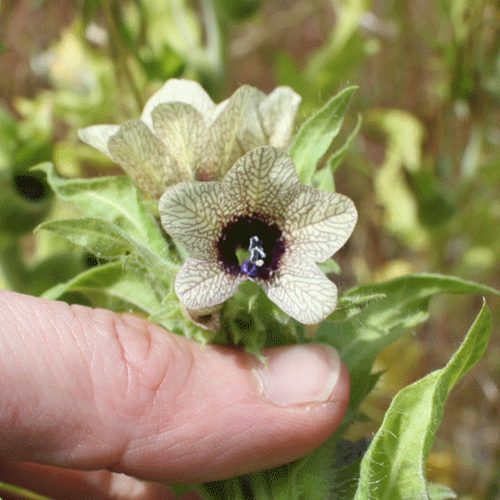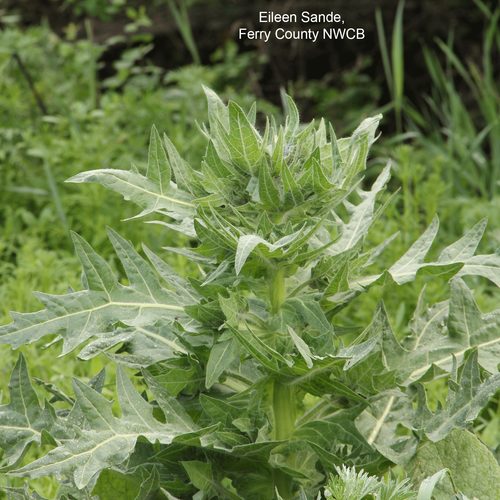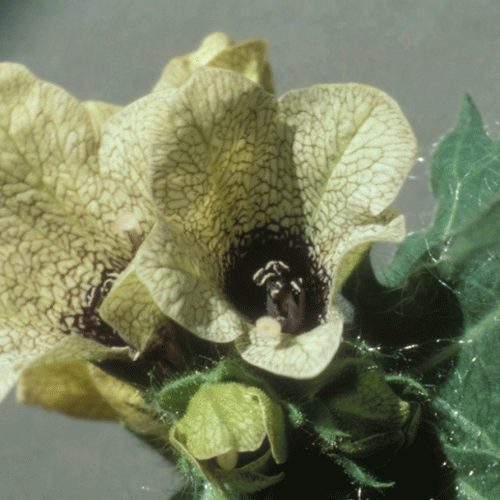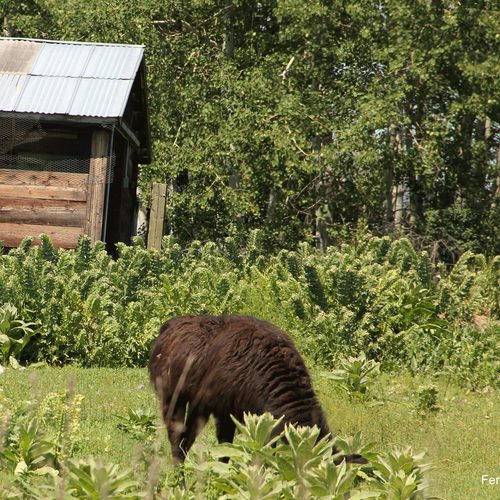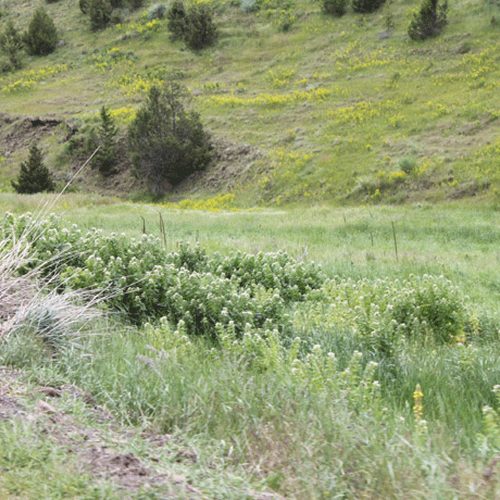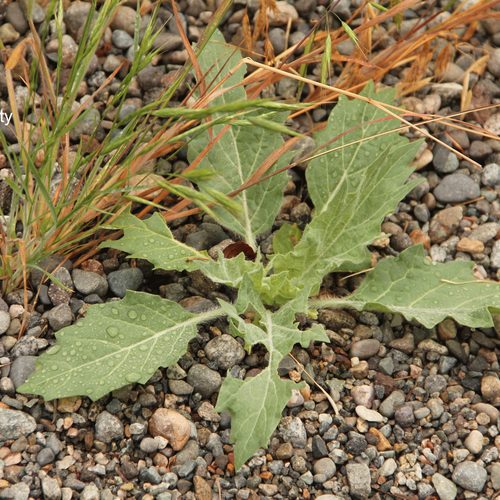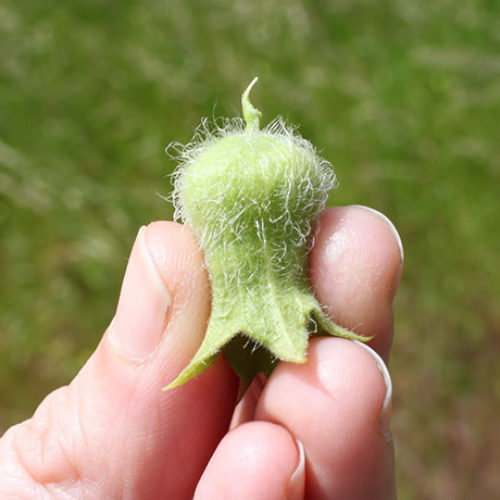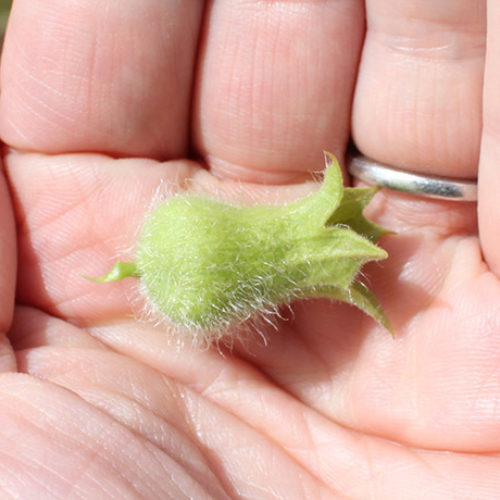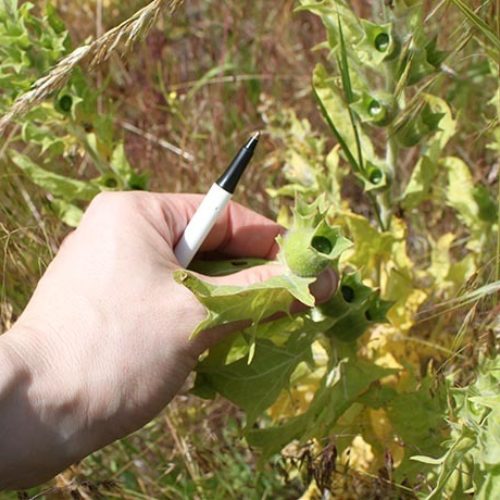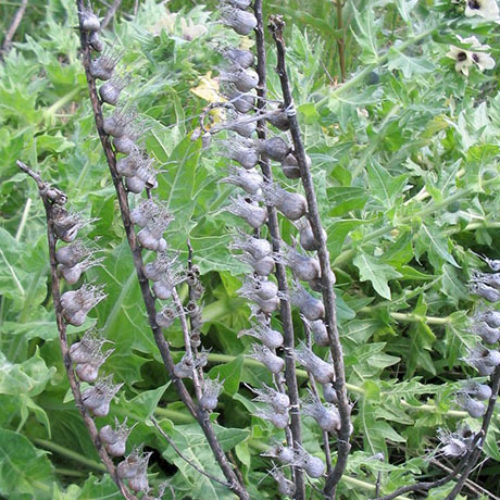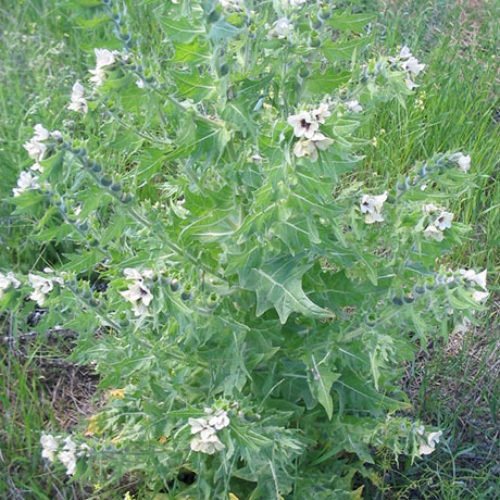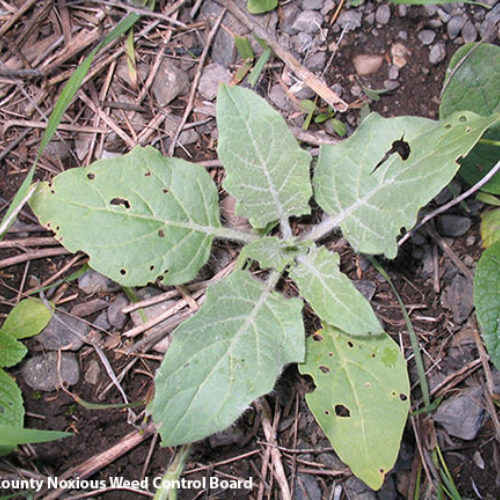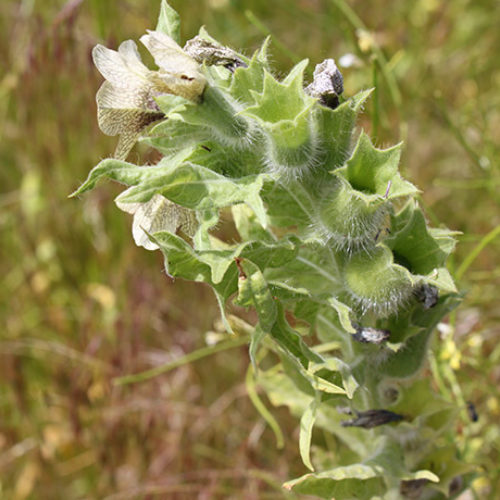Black Henbane
Hyoscyamus niger
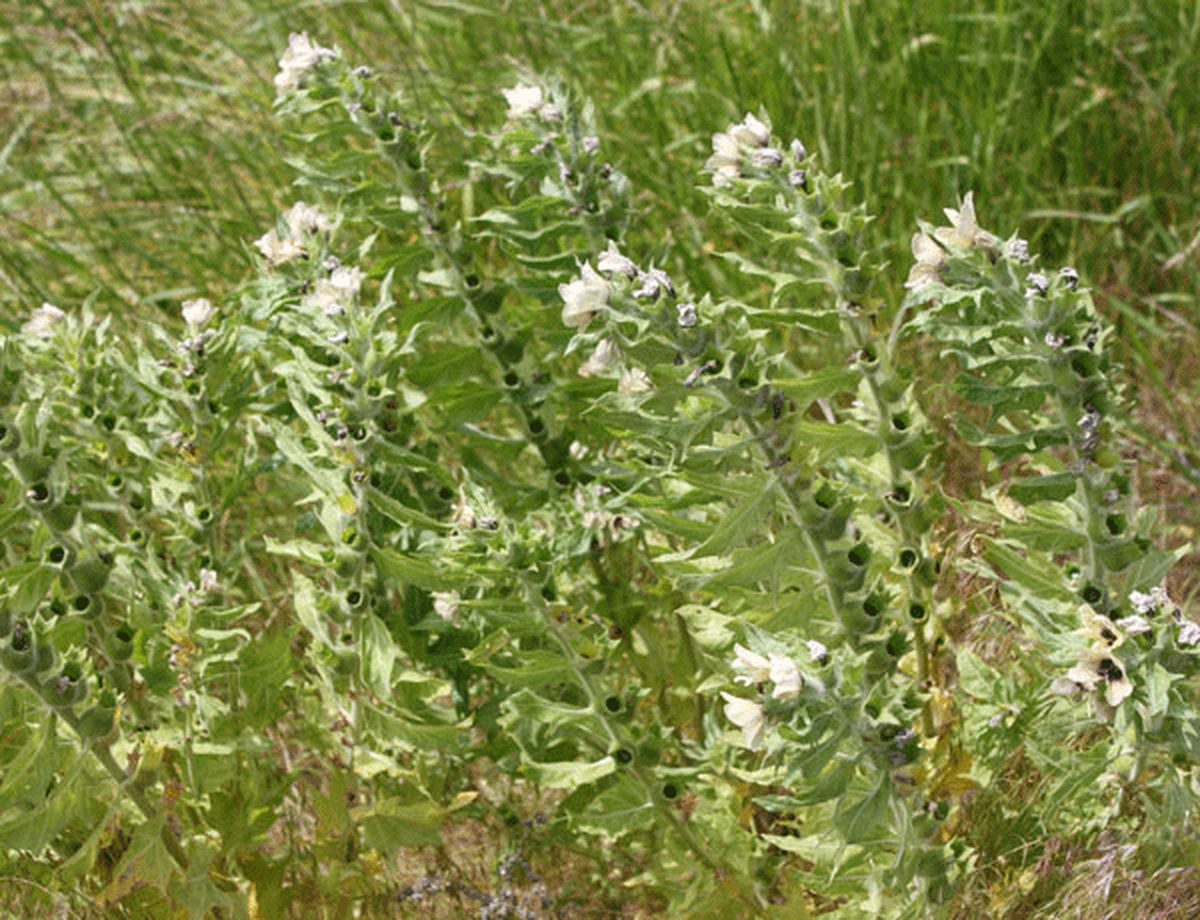
Family: Solanaceae
Other Common Names: hog's bean, stinking nightshade
Weed class: C
Year Listed: 1988
Native to: Asia, Europe and Northern Africa
Is this Weed Toxic?:
humans, livestock
Why Is It a Noxious Weed?
Black henbane is a cultivated ornamental plant and that has spread throughout the United States. It contains hyoscyamine and other alkaloids which have been known to cause occasional livestock poisoning. It is also considered a poisonous plant to humans.
How would I identify it?
General Description
It is an annual or biennial plant that grows up to about 3 feet tall and is covered in glandular hairs, making the plant sticky.
Flower Description
Flowers bloom from May to August and are in one-sided clusters (racemes). Flowers are funnel-shaped with the petals fused at the based and 5 lobed at the tips. They are greenish to brownish-yellow with a purple center and purple veins
Leaf description
Leaves are coarsely-toothed to shallowly lobed. They are sticky and hairy with a foul odor. Leaves may grow in rosettes (a radiating cluster of leaves at ground level) the first year.
Stem description
Stems are upright, tough and can be very thick. Stems may develop from rosettes the second year if plant grows as a biennial.
Fruit Seed Description
Seeds are in small (1 mm), with many in each capsule.
Where does it grow?
Black henbane can be found growing in pastures, fence rows, roadsides, and waste areas. Please click here to see a county level distribution map of black henbane in Washington.
How Does it Reproduce?
Black henbane reproduces by seed. Seeds germinate easily and will remain viable in the soil for several years.
How Do I Control It?
Mechanical Control
Hand-pulling or digging can be effective if the taproot is entirely removed. In order to prevent seed dispersal, plants with mature fruits should be put in bags after removal. The area must be monitored for new seedlings for at least four years. Mechanical control methods are only effective for small infestations. Wear gloves and protective clothing when handling the plants to prevent rashes.
Cultural Control
Good vegetative cover considerably reduces the chance of infestation. Black henbane with mature fruit can be burned to kill the seed and reduce the spread. It will not tolerate plowing, disking or cultivation.
Herbicide Control
Please refer to the PNW Weed Management Handbook, or contact your county noxious weed coordinator.
For More Information
See our Written Findings for more information about black henbane (Hyoscyamus niger).
Report on black henbane from the book "Weed Control in Natural Areas in the Western United States"
Information from Montana State University Extension on black henbane
Information from the Stevens County Noxious Weed Control Board on black henbane



